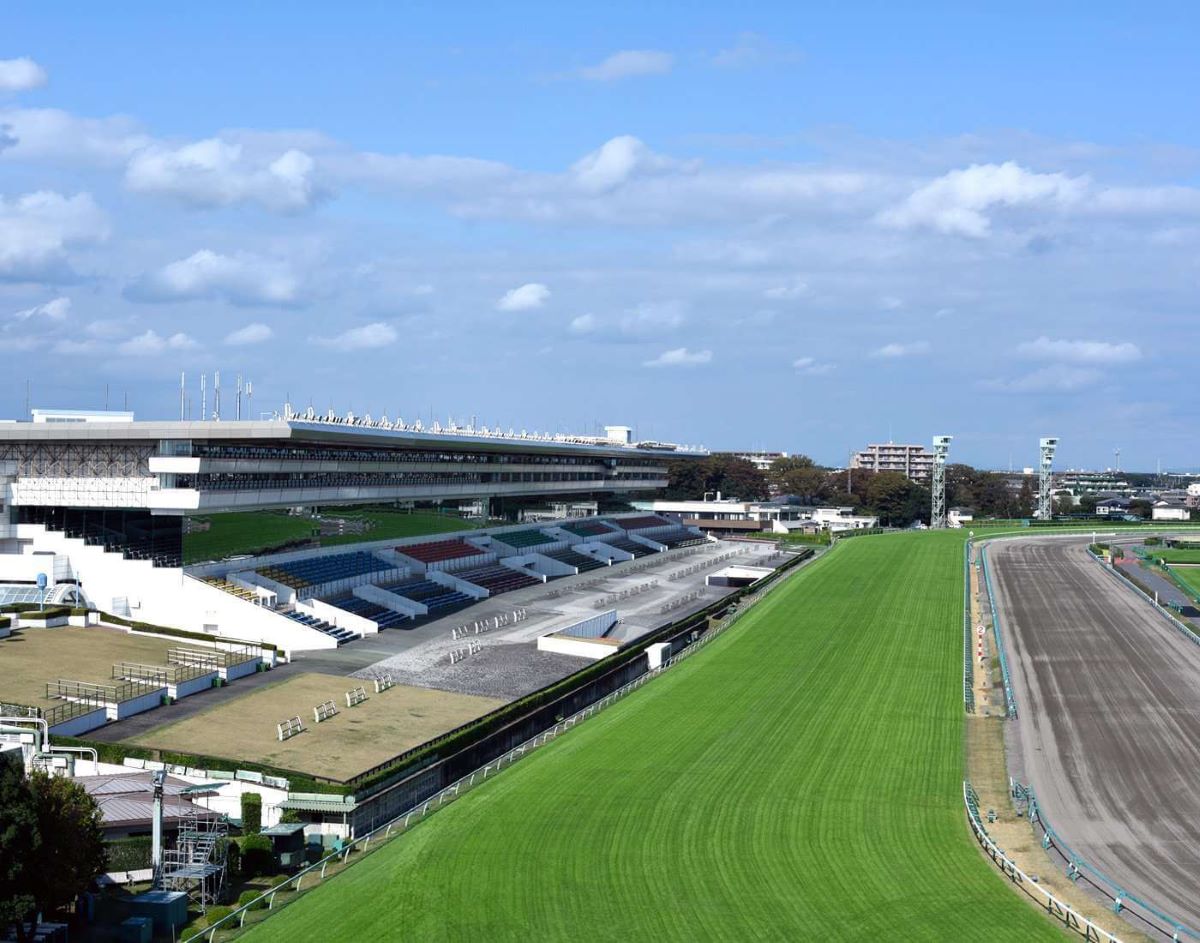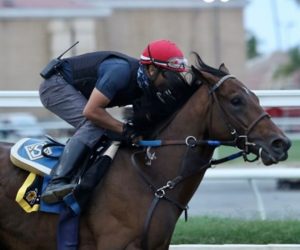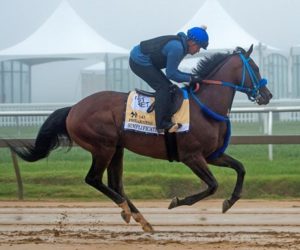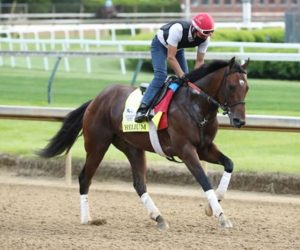This being mid-April, let the speculation begin on which horse can pull off one of the hardest feats in sports: winning the Triple Crown. By this Sunday – Saturday in the United States – we’ll know who took that first step by winning the Satsuki Sho.

The Satsuki Sho? Also known as the Japanese 2,000 Guineas, the Satsuki Sho is the first leg of the Japanese Triple Crown. Dating to 1939 and run every year since – except for 1946 — the 2,000-meter (about 1 ¼ mile) race runs over the inner turf track of Nakayama Racecourse in Chiba, one of the two main racetracks in the Tokyo region.
With three turf routes, a dirt track, and a steeplechase course, Nakayama is the second-largest racetrack in the world. It seats 165,676, but the coronavirus pandemic means the 19 horses will run in front of empty grandstands.
Like its American counterparts, the Satsuki Sho is a spring classic for 3-year-old colts and fillies. Like its American counterparts, it has prep races, these being the Grade 1 Asahi Han Futurity Stakes and Grade 1 Hopeful Stakes last December, and the Grade 2 Hochi Hai Yayoi Sho run on this same course over the same distance in March.
Satsuki Sho is Like the Kentucky Derby on Turf
Unlike the American Triple Crown races, the Satsuki Sho is a right-turn race run on turf – with a twist. Horses must twice navigate a fairly steep rise in the homestretch on a trip taking them through an entire circuit of Nakayama’s inner course.
And like the American Triple Crown, winning the Japanese trifecta is one of the toughest accomplishments in all sports. In fact, it’s harder, even if the races are spread out over six months instead of six weeks.
While 13 horses have won the American Triple Crown, only seven Japanese horses have ever won the Satsuki Sho, Tokyo Yushun (May 31 at Tokyo Racecourse), and the 1 7/8-mile Kikusa Sho (Oct. 25 at Kyoto Racecourse). Deep Impact (2005) and Orfevre (2011) were the most recent. Duramente won the first two legs in 2015, but was injured that summer and did not run the Kikusa Sho.
Look Past the Favorites
Winning that trifecta starts with the Satsuki Sho, which lately, starts with finding the favorite and looking elsewhere. When Saturnalia won last year, he became only the third favorite to win in the last decade. This turns most of the attention to two unbeaten colts: Salios and Contrail, both 3-for-3, and each winning one of the prep races. Salios captured the Asahi Hai by 2 ½ lengths in December and that same month, Contrail a son of Deep Impact, won the Hopeful Stakes on the same Nakayama course.
Both, however, are running into a headwind of Satsuki Sho history. Saturnalia is the only horse since 2003 to win this race in his 3-year-old debut. He pulled off the Hopeful/Satsuki Sho double that Contrail attempts to repeat. And both, as a result, are tepid favorites.
Which brings us to intriguing alternates, such as Satono Flag. Another Deep Impact progeny, Satono Flag has only run 2,000-meter races, including his winning trip in the Hochi Hai Yayoi Sho over this course in March. Last year, he set the juvenile course record in a 2,000-meter maiden race at Tokyo Racecourse by nearly a third of a second. And last month, Satono Flag won the Grade 2 Deep Impact Kinen by nearly two lengths.
Japan’s Top Jockey Chooses Key Alternative to Favorites
Piloting Satono Flag from the prime post five is Christophe Lemaire — Japan’s top jockey in 2017, 2018, and 2019 — who rode Saturnalia to victory here last year. He chose Satono Flag over Darlington Hall, who won the Kyodo News Hai at Nakayama earlier this year.
Your other alternative in an exotic would be Galore Creek, who enters in good form. He won at this 2,000-meter distance in his debut, then three starts later, won the Grade 2 Sho Spring Stakes at Nakayama in March.











